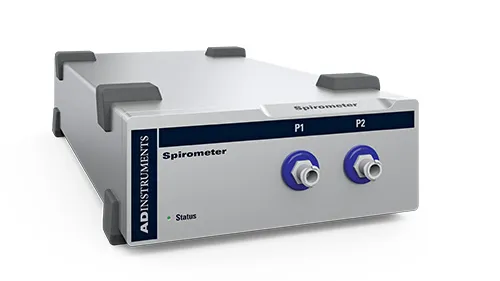Here at ADInstruments, we're lucky to be a part of a large and thriving research community. Join us in celebrating some of the incredible work that has been published by that community in August 2024.
In situ assembly of an injectable cardiac stimulator
Published in Nature Communications
In their article, Aydemir et al. describe the development of a bioresorbable injectable cardiac stimulator designed to address cardiac arrhythmias without requiring surgery. The device, a syringe loaded with a nanoparticle solution, forms a conductive hydrogel around the heart upon injection, capable of regulating heartbeats and correcting arrhythmias. This hydrogel adheres to the heart, does not disrupt its normal function, and is eventually cleared by the body, eliminating the need for surgical removal.

The stimulator demonstrates high conductivity and biocompatibility, maintaining its functionality for five days with no observed toxicity in animal models. Aydemir et al. suggest the stimulator could be an easily transportable and minimally invasive alternative to traditional pacemakers and defibrillators.
Read more: https://doi.org/10.1038/s41467-024-51111-4
ADInstruments Products Used:
Bitter tastants relax the mouse gallbladder smooth muscle independent of signaling through tuft cells and bitter taste receptors
Published in Scientific Reports

In this article, Keshavarz et al. explore the effects of bitter substances on the relaxation of the mouse gallbladder. The researchers tested various bitter tastants, including denatonium, quinine, dextromethorphan, and noscapine, and found that these substances could relax the pre-contracted gallbladder in a dose-dependent manner. Interestingly, this relaxation occurred independently of the classical bitter taste receptors (TAS2R) and the associated signaling pathways, which typically involve tuft cells and the TRPM5 ion channel.
The findings suggest that bitter tastants can directly act on gallbladder smooth muscle cells, potentially offering new therapeutic avenues for treating gallbladder motility disorders.
Read More: https://doi.org/10.1038/s41598-024-69287-6
ADInstruments Products Used:
The role of protein prenylation inhibition through targeting FPPS by zoledronic acid in the prevention of renal fibrosis in rats
Published in Scientific Reports
In this article, Mohamed et al. investigate the role of protein prenylation inhibition in preventing renal fibrosis in a rat model. Renal fibrosis, often resulting from chronic kidney disease, was induced using carbon tetrachloride in rats. The research demonstrated that zoledronic acid, administered at a dose of 50 µg/kg/week, significantly improved kidney function, reduced inflammation, oxidative stress, and fibrosis markers in renal tissues. The protective effects were attributed to the inhibition of farnesyl pyrophosphate synthase and subsequent reduction in protein prenylation, which in turn suppressed the activation of the NF-κB signaling pathway. The findings suggest that zoledronic acid may offer a therapeutic approach to preventing renal fibrosis by targeting protein prenylation pathways.
Read More: https://doi.org/10.1038/s41598-024-68303-z
ADInstruments Products Used:
Evidence for a sustained cerebrovascular response following motor practice
Published in Imaging Neuroscience

In this article, Patitucci et al. explore the relationship between motor learning and sustained changes in cerebral blood flow. The study involved 20 healthy volunteers who underwent MRI sessions before and after performing a motor task using a data glove. The researchers observed that motor learning induced a localized increase in cerebral blood flow in the right extra-striate visual area
(MT/V5), which was sustained even during an 8-minute rest period following the task. This increase in cerebral blood flow was also associated with enhanced local synchronization of the BOLD signal, suggesting that the cerebrovascular changes may reflect underlying neuroplasticity supporting motor skill acquisition.
Read More: https://doi.org/10.1162/imag_a_00282
ADInstruments Products Used:
Serotonin reuptake inhibitors improve muscle stem cell function and muscle regeneration in male mice
Published in Nature Communications
Fefeu et al. investigate the effects of fluoxetine, a selective serotonin reuptake inhibitor, on muscle regeneration in male mice. The team found that prolonged administration of fluoxetine enhanced muscle stem cell function, increased muscle angiogenesis, and improved overall muscle regeneration following injury. These effects were shown to be dependent on peripheral serotonin and

specifically mediated by the 5-HT1B serotonin receptor. The findings suggest that fluoxetine has potential therapeutic applications in enhancing muscle repair and regeneration beyond its traditional use as an antidepressant.
Read More: https://doi.org/10.1038/s41467-024-50220-4
ADInstruments Products Used:
